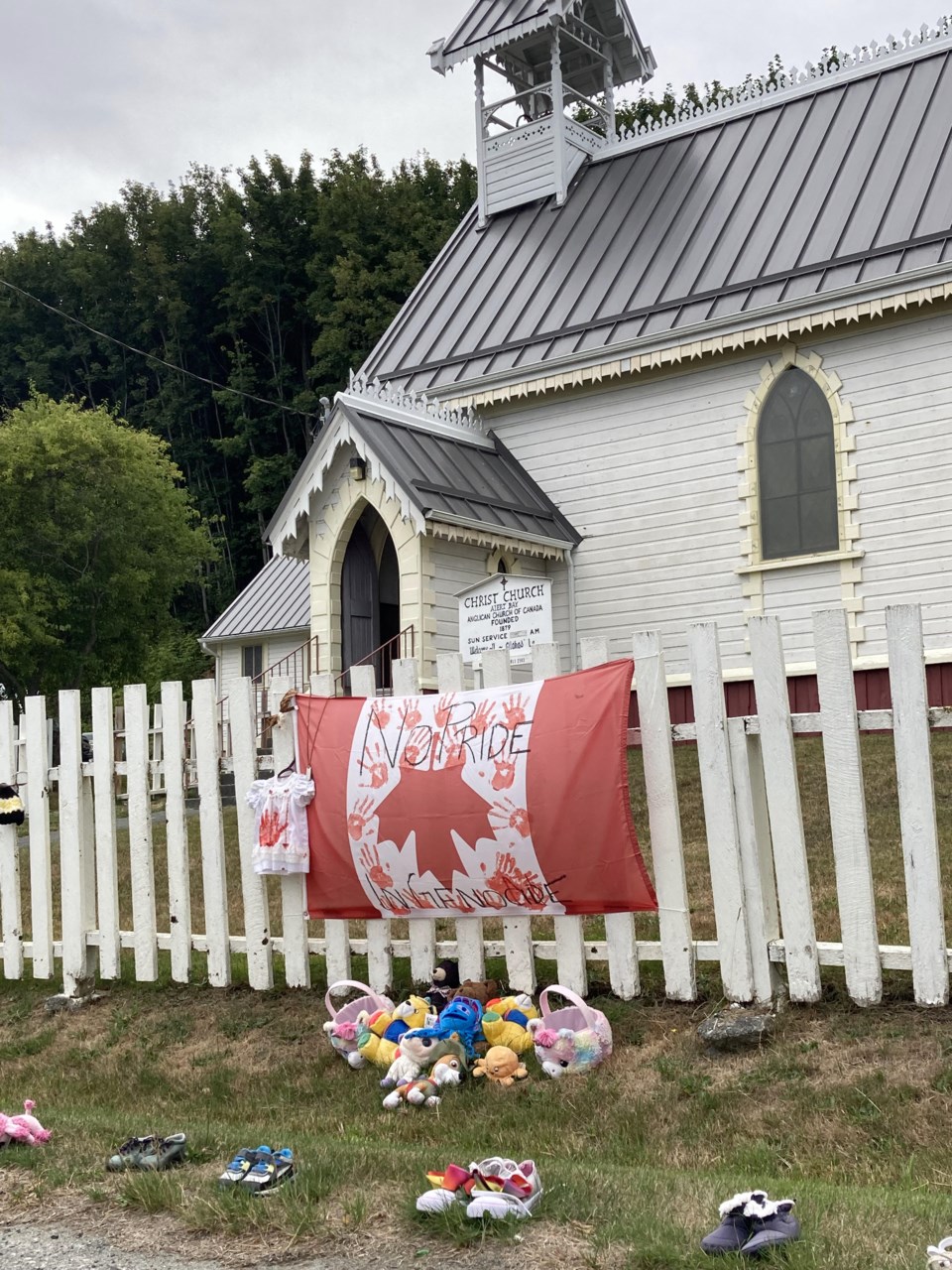Last month I vacationed on Vancouver Island. We weren’t long off the ferry, heading north to Port Hardy when we noticed bits of clothing fluttering in the breeze along the highway. I did a double take.
I’ve seen the bright orange shirts staked along roadways in Vancouver, but this was different. They weren’t the trademark orange T-shirts with the Every Child Matters logo. These were blouses, sweaters, sweat shirts, pajama tops of all different shapes and sizes. Yes, they were all one shade of orange or another, but some would have fit a five-year-old girl, others a 16-year-old boy. They were visible but also tucked in among the trees — like spirits.
It was a poignant recognition of the children we have lost — those who never came home from residential schools and those who came home badly broken.
Today (Sept. 30, 2021) marks Canada’s first-ever National Day of Truth and Reconciliation, a day to acknowledge the history of residential schools and the routine abuse of Indigenous children.
The orange shirt has come to symbolize the trauma of residential schools thanks to Phyllis Jack Webstad, a survivor.
On the website orangeshirtday.org, Webstad tells her story of being excited to start school at age six and her grandmother buying her a bright orange shirt that laced up the front for her first day.
“When I got to the mission, they stripped me, and took away my clothes, including the orange shirt! I never wore it again. I didn’t understand why they wouldn’t give it back to me, it was mine! The color orange has always reminded me of that and how my feelings didn’t matter, how no one cared and how I felt like I was worth nothing.”
It’s hard to imagine that sense of erasure, that sense of being scrubbed “clean” of the very person you are.
Also while in northern Vancouver Island, we went to Alert Bay, a quaint village on a beautiful island that was the hub of the fishing industry in the 1970s.
Unfortunately, Alert Bay was also home to the largest residential school operated by the Anglican church. It opened in 1882, and in 1929 the church built St. Michael’s Residential School, an ominous four-story brick building which housed 200 live-in students that had been corralled from First Nations throughout the region.
Just to be clear about the true intent of these institutions, note a Vancouver Sun story that includes an expert from the Indian Residential School Commission of the Missionary Society of the Church of England published in 1934.
It states that it thanks: “Almighty God for what has been accomplished: for a race of people brought in the shortest period of time known in history from the most debasing savagery to citizenship both in the Kingdom of our God and in his God-blessed Dominion of Canada.”
The students were forbidden from speaking their language and kept away from their families for years. Meanwhile, reports of physical and sexual abuse were rampant. The school closed in 1975 and was demolished in 2015.
As I stared at that empty space now strewn with stuffed toys, I felt somewhat sick.
But the story doesn’t end there.
Adjacent to that toxic spot stands the U’mista Cultural Centre, a warm and inviting building that tells the stories of Indigenous people in that area — their culture, their industry, their traditions, as well as their trauma.
Among the exhibits is a series of photos taken by a girl named Beverly, whose dad gave her a camera before she was dragged off to St. Michael’s at age seven.
These are the only known photos of residential school students taken by the students themselves.
There’s power in that — and hope.
With the telling of the story in the hands of the survivors, we can move forward.



